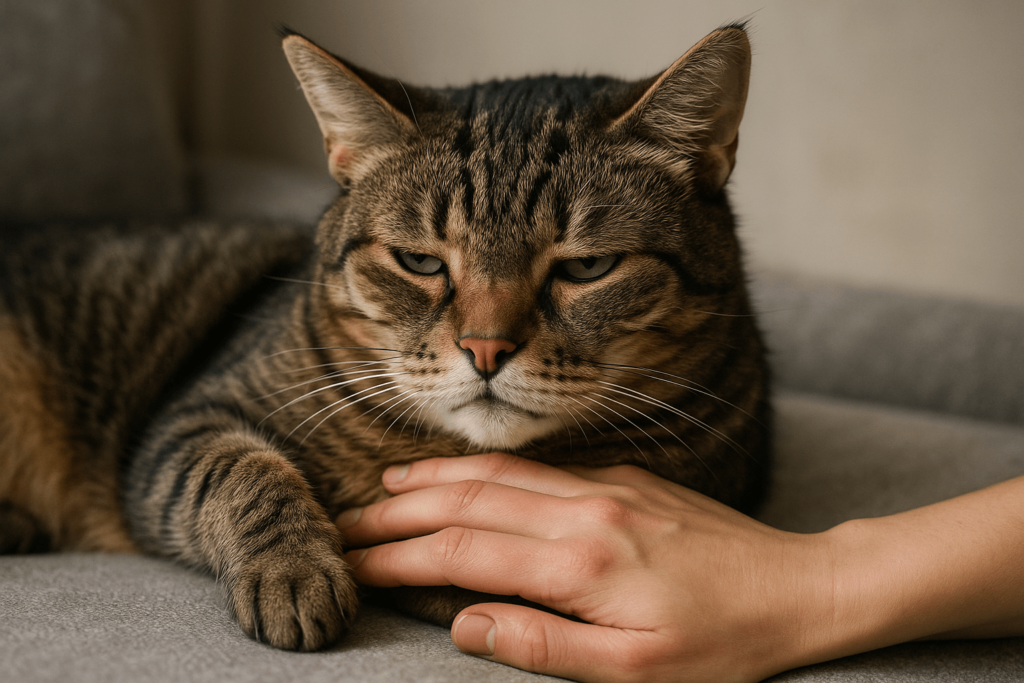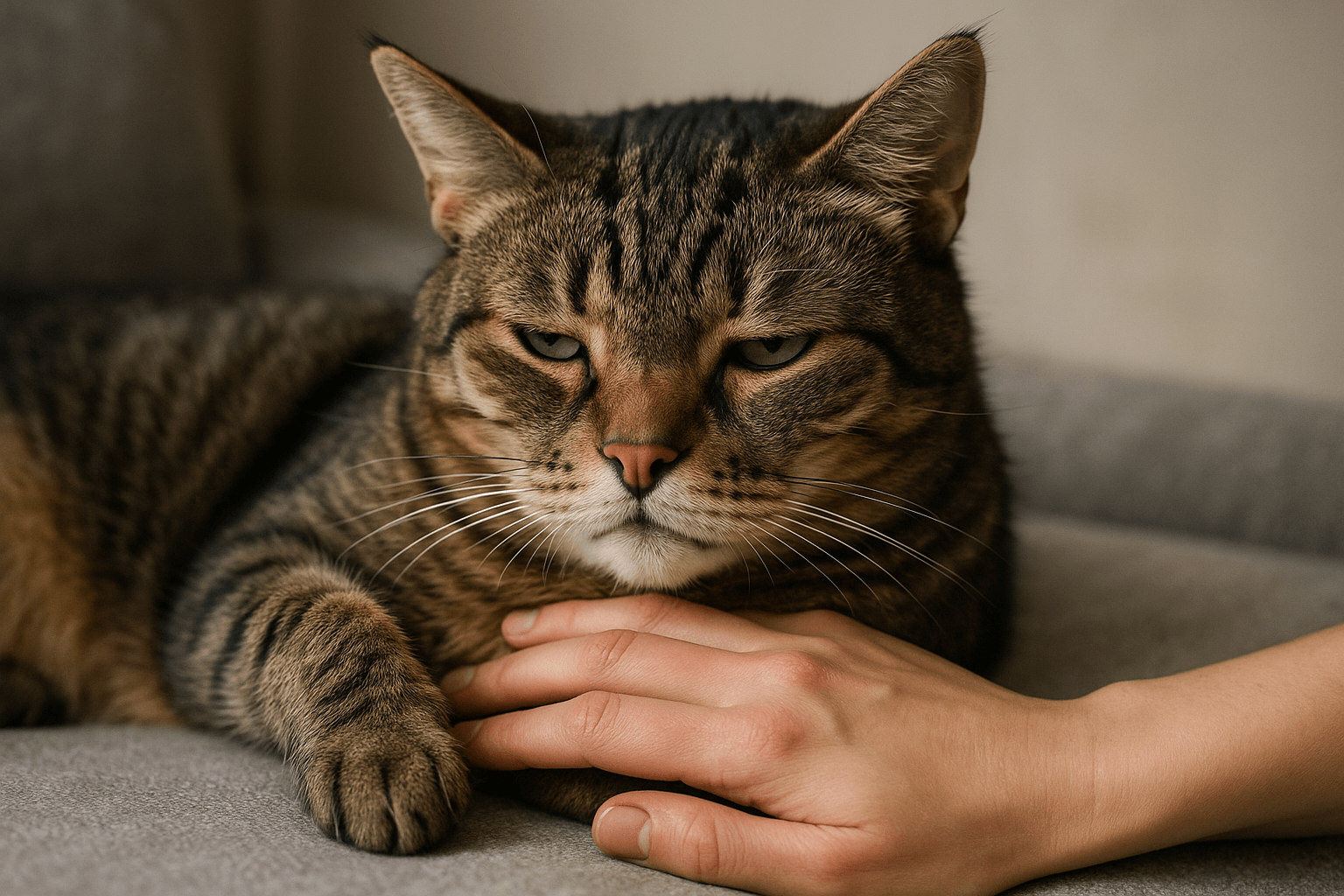Cat Heart Disease Symptoms: The Silent Signals Your Feline Is Trying to Tell You
Cats are masters of disguise. When something’s wrong, they don’t cry out—they withdraw. Heart disease in cats often progresses silently, with no obvious signs until it’s advanced. Recognizing subtle changes in behavior, breathing, or energy levels isn’t just helpful—it can save your cat’s life. This guide reveals the quiet, often overlooked symptoms of feline heart disease and empowers you to act before it’s too late.
Why Heart Disease in Cats Is So Hard to Detect
Unlike dogs or humans, cats rarely show dramatic signs of heart trouble. Their survival instincts drive them to hide weakness. That’s why symptoms are often mistaken for aging or laziness. Here’s what you need to know:
Cats mask pain and illness as a natural defense mechanism—something rooted in their wild ancestry where showing vulnerability meant becoming prey.
Heart disease often develops without coughing or obvious distress, making it easy to overlook compared to respiratory infections.
Early-stage symptoms are mild and intermittent, like reduced playfulness or slight lethargy, easily dismissed as “just being tired.”
There’s no single telltale sign—symptoms vary widely between cats and can mimic other conditions like kidney disease or arthritis.
Many cats are diagnosed only after a crisis, such as sudden collapse or blood clot formation, which is why vigilance is critical.
If your cat seems “off,” even just a little, trust your gut. Early detection is the only real chance for effective management—and sometimes, survival.

The Most Common Symptoms of Feline Heart Disease
Heart disease doesn’t announce itself with a roar—it whispers. These are the subtle, frequently ignored signs that something is wrong inside your cat’s chest:
Lethargy or Reduced Activity:
Your cat sleeps more, avoids jumping, or no longer chases toys. This isn’t aging—it’s strain on the heart.Rapid or Labored Breathing:
Even at rest, your cat breathes faster than normal, with flared nostrils or an open mouth. This is a sign of fluid buildup in the lungs.Decreased Appetite or Refusal to Eat:
A cat losing interest in food is often signaling systemic discomfort—heart disease reduces circulation to the digestive system.Cool or Pale Gums and Paws:
Normal gums are pink and moist. Pale, blue, or cold extremities indicate poor blood flow and oxygen deprivation.Sudden Hind Limb Paralysis:
This is a medical emergency. A blood clot (saddle thrombus) blocking blood flow to the back legs causes extreme pain and inability to walk.
These symptoms don’t always appear together. One or two might be all there is. And that’s exactly why they’re so dangerous.
Check this guide 👉Understanding Cat Heart Murmurs: Best 7 Health Tips!
Check this guide 👉Understanding Your Cats Resting Heart Rate: Best 7 Tips!
Check this guide 👉Can Cats Eat Chicken Hearts? Best 7 Expert Tips!
| Early Warning Sign | What It Means Physiologically |
|---|---|
| Sleeping more than usual | Heart struggles to pump enough oxygen, forcing the body into energy-conservation mode. |
| Breathing with mouth open | Lungs are congested; nasal breathing isn’t enough to meet oxygen demands. |
| Hiding more often | Pain, disorientation, or fear from reduced oxygen triggers instinctual withdrawal. |
| Weight loss despite normal eating | Heart failure reduces nutrient delivery and metabolism, causing muscle wasting. |
| Sudden change in vocalization | Discomfort or anxiety from low oxygen may cause increased meowing—or complete silence. |
Hidden Signs You Might Mistake for Aging or Stress
Many cat owners assume their senior cat’s slowing down is normal. But heart disease isn’t just an old-cat problem—it’s a silent thief that steals vitality. Here’s what’s often misread:
Avoiding the Litter Box:
A cat with heart disease may lack the energy to jump into a high-sided box—or may be too weak to hold it. This is not “accidental” behavior.Grooming Less or Stopping Altogether:
Poor circulation reduces energy for self-care. A matted coat isn’t laziness—it’s organ strain.Irritability or Aggression:
Pain from poor oxygenation can make a gentle cat suddenly snap. This isn’t personality change—it’s neurological distress.Panting After Minimal Activity:
Cats don’t pant like dogs. If your cat breathes heavily after walking across the room, their heart is struggling.Cold Ears or Paws:
Normal cats have warm extremities. Cold limbs signal poor peripheral circulation—a classic sign of heart compromise.
Don’t label it as “just getting old.” Label it as a red flag. Your cat isn’t lazy—they’re fighting.
The Most Dangerous Symptom: Sudden Limb Paralysis
One of the most terrifying and sudden signs of feline heart disease is hind limb paralysis. It happens without warning and feels like a nightmare.
It’s caused by a blood clot (saddle thrombus) that breaks off from the heart and blocks the aorta, cutting off blood to the back legs.
The legs become cold, rigid, and painful. Your cat may scream, cry, or refuse to move.
This is a true emergency. Without immediate treatment, tissue death occurs within hours.
Survival rates are low, but early intervention can restore circulation and save limbs.
It’s almost always linked to underlying hypertrophic cardiomyopathy (HCM), the most common heart disease in cats.
If your cat suddenly can’t walk, doesn’t respond to touch on their back legs, or has blue/purple paw pads—go to the vet now. Every minute counts.
When to Suspect Heart Disease: Risk Factors You Can’t Ignore
Not all cats are equally at risk. Some are silently predisposed. Know your cat’s vulnerability:
Breed Predisposition:
Ragdolls, Maine Coons, British Shorthairs, and Sphynx cats have higher genetic risk for HCM.Age Over 8 Years:
While heart disease can strike young, incidence rises sharply after age eight.Obesity or Poor Diet:
Excess weight strains the heart. Diets low in taurine (rare now) can cause dilated cardiomyopathy.Hyperthyroidism or Hypertension:
These conditions put extra pressure on the heart and often coexist with heart disease.History of Sudden Death in Relatives:
If a close relative died young without clear cause, genetic screening may be warranted.
Even if your cat seems fine, these factors mean regular vet checks aren’t optional—they’re essential.
What the Vet Will Do: Diagnosis and Testing
If your vet suspects heart disease, they won’t guess—they’ll test. Here’s what to expect:
Physical Exam:
Listening for heart murmurs, irregular rhythms, or abnormal lung sounds with a stethoscope.Chest X-Rays:
Shows heart size, shape, and fluid in the lungs—key indicators of failure.Echocardiogram (Ultrasound):
The gold standard. Shows heart muscle thickness, chamber size, and valve function in real time.Blood Tests:
Checks for thyroid levels, kidney markers, and cardiac biomarkers like NT-proBNP.Blood Pressure Measurement:
High blood pressure is both a cause and consequence of heart disease.
Early diagnosis doesn’t always mean cure—but it means control. Medication, diet, and monitoring can extend your cat’s life by years.
Managing Heart Disease: Hope, Not Just Diagnosis
Heart disease isn’t a death sentence. With proper care, many cats live comfortably for years.
Medications like Atenolol or Clopidogrel help regulate heart rate and prevent clots.
Low-Sodium Diets reduce fluid retention and ease the heart’s workload.
Regular Monitoring every 3–6 months keeps progression in check.
Stress Reduction is critical—minimize changes, provide quiet spaces, avoid loud noises.
Home Observations matter most. Track breathing rate, appetite, energy, and litter box habits daily.
Your vigilance is the most powerful tool in your cat’s treatment plan.
FAQ: Cat Heart Disease Symptoms
Can a cat with heart disease still be playful?
In early stages, yes. Many cats appear normal until the disease advances. Don’t wait for dramatic symptoms.
Is heart disease painful for cats?
Yes—especially during fluid buildup, clots, or arrhythmias. Cats hide pain, but rapid breathing, hiding, and vocalization are clues.
Can I prevent heart disease in my cat?
Not always, but you can reduce risk: feed high-quality food, maintain healthy weight, manage thyroid disease, and schedule regular vet visits.
Do cats with heart disease need special food?
Often, yes. Veterinarians recommend low-sodium, taurine-rich diets. Never switch food without professional guidance.
How long can a cat live with heart disease?
With early detection and management, many live 1–5+ years. Without treatment, survival is often months.
Listen to the Whisper, Not the Silence
Your cat doesn’t scream when their heart is failing. They don’t cry out. They curl up a little longer. They breathe just a little faster. They stop jumping—not because they’re old, but because their body is asking for help.
Heart disease in cats doesn’t come with a warning siren.
Canned Pumpkin for Cat Diarrhea: Best 7 Expert Tips! Natural remedy to firm stools, soothe upset bellies, and support gut health safely.
Can a Cat Give You Scabies? Best 7 Expert Tips! Discover the truth about feline mites, human skin risks, and how to protect yourself—without panic.
Cat Flea vs Human Flea: Best 7 Expert Tips! Discover the truth about bites, species, and how to eliminate infestations for good.
Weird Cat Behaviors: Best 7 Expert Tips! Discover why cats do strange things—and how to understand, not punish, their instincts for a happier home.





